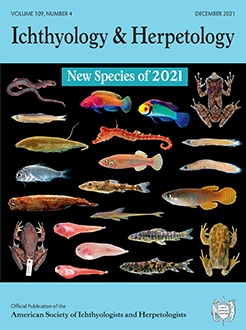The Philippine-endemic elapid genus Hemibungarus consists of three described species that are widely distributed across northern and central portions of the archipelago. Hemibungarus calligaster, H. mcclungi, and H. gemianulis were originally diagnosed, and remain recognized today, primarily based on differences in color pattern. Previous studies and faunal checklists suggest that these species occupy distinct geographic distributions within the Philippines. However, the relatively low numbers of specimens in collections and the misidentification of older specimens under outdated taxonomy have hampered a synthetic understanding of their actual distributional limits. Thus, an in-depth revisiting of the range of external morphological and color pattern variation within and among each species is still needed to clarify species boundaries and determine whether distributional limits change once properly documented. We provide a geographic assessment of morphological variation, using 98 specimens of Hemibungarus from institutional collections and public databases to reevaluate the range of phenotypic variation exhibited by each taxon and critically assess the geographic ranges of all three species of Hemibungarus. We use these data and multivariate statistics (principal coordinate and linear discriminant analyses) to demonstrate quantitatively how meristic data support the phenotypic distinctiveness of each species and to update the identifications of all accessible specimens. Georeferencing all specimens reidentified with morphological data indicates that H. calligaster is limited to central and northern regions of Luzon Island, whereas H. gemianulis is restricted to islands in central Philippines (Visayas). Hemibungarus mcclungi, previously considered restricted to the Bicol Peninsula in southern Luzon, appears to be more widely distributed—extending north into central and northern Luzon. We also identify a population of Hemibungarus that is intermediate in morphology between the parapatric H. calligaster and H. mcclungi, which raises the question of species boundaries and should be the focus of future study. Overall, our results provide a much-needed reconsideration of the identities of all available specimens in the world's biodiversity repositories, which use newly summarized data to elucidate the geographic distributions of the members of this enigmatic elapid genus, identify future directions for research on this group, and highlight the importance of returning to verified species occurrence data from the source (museum specimens) when considering biogeographical questions, species boundaries, and all related natural history studies.
BioOne.org will be down briefly for maintenance on 17 December 2024 between 18:00-22:00 Pacific Time US. We apologize for any inconvenience.
How to translate text using browser tools
17 November 2021
Multivariate Characterization of Phenotypic Variation from throughout the Geographic Ranges of Philippine False Coral Snakes: Two Species or Four?
Justin M. Bernstein,
Joward Bautista,
Arvin C. Diesmos,
Michael A. Clores,
Michael Cuesta,
Marites B. Sanguila,
Rafe M. Brown
ACCESS THE FULL ARTICLE

Ichthyology & Herpetology
Vol. 109 • No. 4
December 2021
Vol. 109 • No. 4
December 2021




